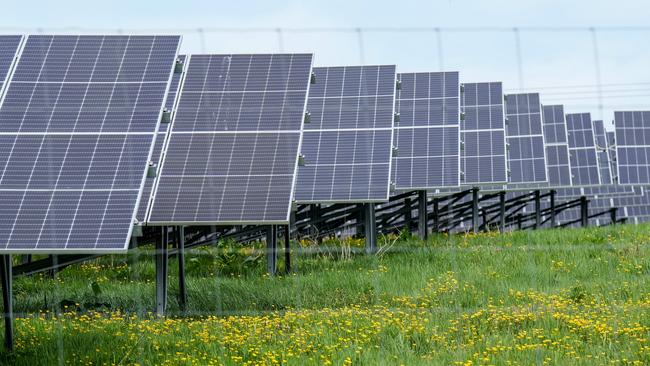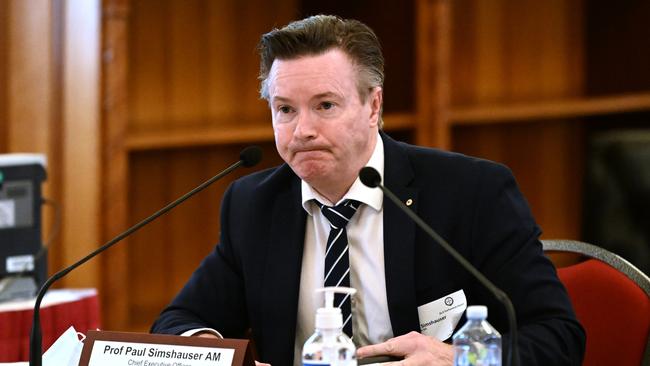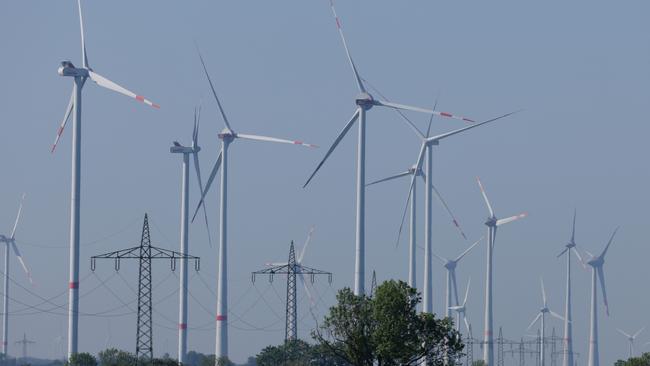$300b bill: Cost of renewable energy revealed
The cost of solar, wind, batteries, hydro and gas assets will be about 30 per cent more expensive than the current system, new research suggests. See why.
National
Don't miss out on the headlines from National. Followed categories will be added to My News.
Exclusive: Wholesale electricity prices are about 30 per cent more expensive in a system mainly reliant on intermittent renewables versus power from the existing coal-dominated system, according to new modelling by a leading academic who also runs a government-owned energy business.
The research by Paul Simshauser of Queensland’s Griffith University suggests the cost of solar, wind, batteries, hydro and gas assets needed to get close to net zero will be about $300 billion in today’s dollars compared to the current system’s worth of $136bn.
The price of wholesale electricity from a market dominated by mostly green sources would be more than $130 a megawatt hour. The present cost is about $100/Mwh, the researchers say.
It’s understood their comparison removes factors such as inflation, although Mr Simshauser, who is also CEO of the Queensland government’s transmission network business Powerlink, declined to comment.

Before the last election, Anthony Albanese vowed to lower household power bills by an average of $275 by 2025 if Labor won government. Instead, in most areas, they have risen by vastly more.
Asked by a reporter on Tuesday whether it was time to concede the pledge was not going to be delivered, Mr Albanese bristled: “You get to do the questions, I get to do the answers. That’s the way it works.”
In October, Australian Energy Market Operator CEO Daniel Westerman conceded there was no guarantee the transition to renewables would lead to lower power bills.
In their new research, Professor Simshauser and Cambridge University’s Joel Gilmore, say: “Decarbonising our power systems requires coal plant to exit and be replaced by intermittent renewables, along with a diversified fleet of flexible firming plant capacity (namely) batteries, pumped hydro (and) gas turbines.
“The outstanding renewable investment task is very material,” the duo write.

They argue that “electrification” – where, for example, some gas appliances are banned – can make that job even more difficult, by increasing demand for electricity.
Victoria and the ACT are at the forefront of the electrification movement in Australia as part of their governments’ plans to decarbonise.
“Accelerating electrification may have the unintended effect of entrenching coal plant for longer,” Messrs Simshauser and Gilmore suggest.
Already, the Victorian and NSW governments have struck deals to keep coal-fired power stations open for longer than owners intended amid growing concerns about power shortages.
The researchers note that over the past eight years, $83bn has been invested in 35 gigawatts of wind, solar, batteries, pumped hydro and power plants fuelled by gas.

However, “the run of investment, and new renewable commitments in particular, appeared to visibly slow during the 2024 financial year. This may be cyclical and therefore a transient matter … in which case there is no need for policymaker interjection.
“If structural, with projects becoming progressively harder to develop due to, for example, changes in environmental laws … or because at 40 per cent market share, the easy projects have been done and from here on the hard work begins, then some level of policy adjustment may be required.”
Messrs Simshauser and Gilmore write: “One issue which does present as problematic is flexible firming capacity.”
To cover sun and wind droughts, at least 35GW of additional hydro and gas-fired power is needed, compared to the current level of 20GW.
“The national electricity market (NEM) cannot rely on short duration batteries alone,” they write.
The analysts conclude by saying European and North American readers of their work may find the general lack of support for gas in Australia to be “odd.”
“Natural gas and GTs (gas turbine plants) are widely accepted as crucial to the energy transition in those jurisdictions. Thus far, not so in Australia. Gas and GTs have proved almost divisive and remain excluded from many (but not all) government-initiated … schemes in the NEM.”




